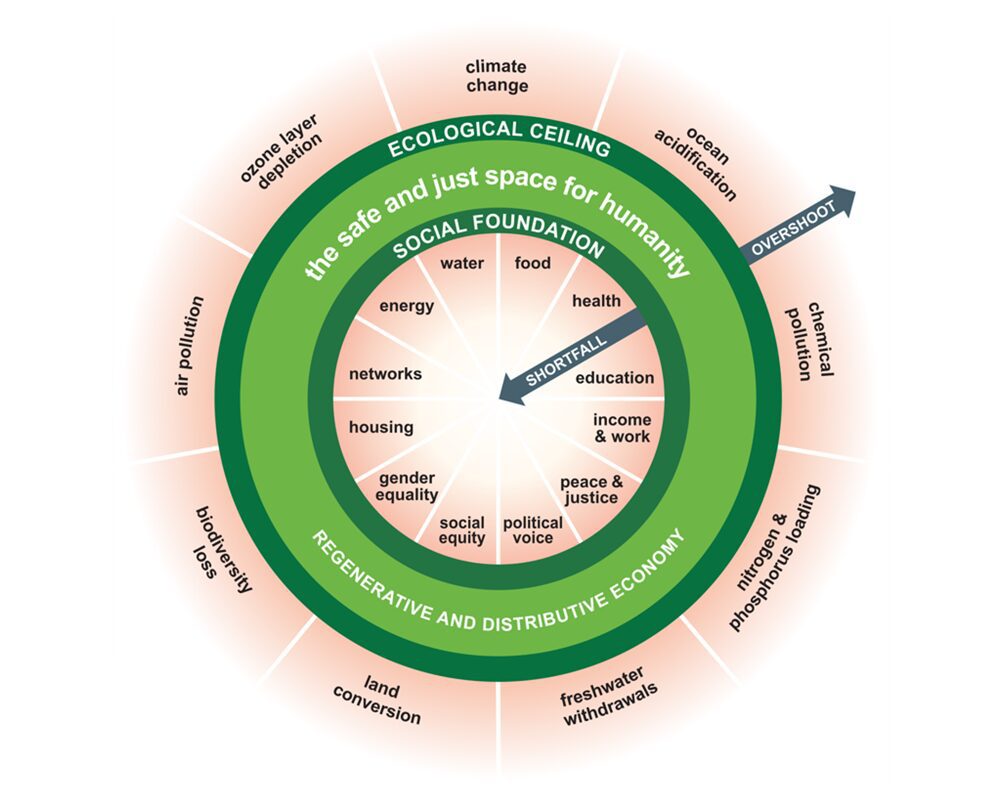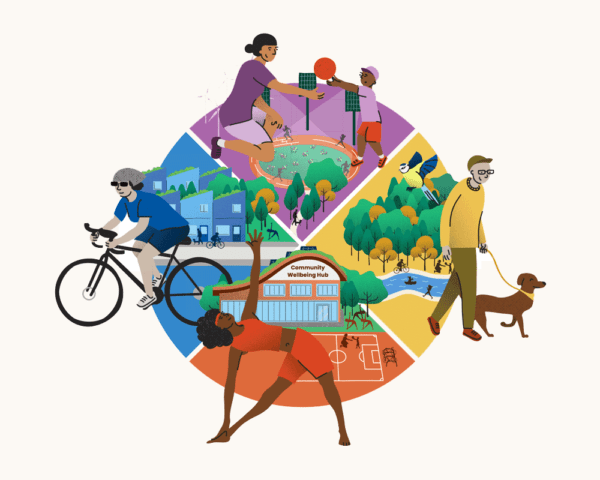Tackling Environmental and Social Issues
Major events, like the Olympic and Paralympic Games, can also support Doughnut Economics principles. The London 2012 Olympic Park had an integrated Sustainability Strategy, with six environmental and six social themes – and a strong focus on building a sustainable legacy. But most often, we see environmental and social issues tackled separately in silos.
The organisations operating at a governance/policy level have a role to advocate for Doughnut Economics and joined-up approaches to the environmental and social agendas. Sport England’s Sustainability Strategy ‘Every Move’, which Useful Projects developed, is a good example of sector-wide leadership on this topic. Whilst it doesn’t explicitly reference the Doughnut Economics model, it makes the links between inequalities, participation in sport, and climate change. Climate justice/just transition is also one of the key pillars in the strategy, bringing the social dimension to the environmental themes.
Doughnut Economics and climate justice are closely linked through their shared focus on creating a fair, sustainable, and equitable world:
- Doughnut Economics advocates for a balance between meeting human needs (social foundation) and staying within planetary boundaries (ecological ceiling).
- Climate Justice focuses on the need to address the unequal impacts of climate change on different populations, ensuring that vulnerable and marginalised communities are protected while transitioning to a sustainable future. You can read more in our Climate Justice in Sport write-up.
Social Foundation: Ensuring Equity and Wellbeing
To begin with, Doughnut Economics emphasises the importance of meeting essential human needs. In sports, this translates to promoting inclusive participation. Access to sports should transcend age, gender, socio-economic status, and physical ability, ensuring everyone can engage in physical activities.
Community engagement is another key aspect; sports can be a powerful tool for social cohesion and development, fostering a sense of belonging and shared purpose. Physical health and wellbeing benefits from participating in sports is another element of a strong social foundation. Ethical labour and supply chain practices are also crucial. All workers, from athletes to support staff, deserve fair wages, decent working conditions, and respect for their rights. Community-based models of sports management, where clubs and facilities are owned and operated by local communities, can ensure that benefits are distributed locally and equitably.
Finally, a powerful social lever is the power to inspire cultural change – sports organisations and athletes have an opportunity to educate, engage and inspire people towards more sustainable lifestyles and business operations.
Ecological Ceiling: Staying within Planetary Boundaries
On the environmental front, Doughnut Economics urges us to respect planetary boundaries. This includes designing and operating sports stadiums and facilities to minimise environmental impact. For instance, facilities can incorporate energy efficiency measures, solar panels, rainwater harvesting systems, use low environmental impact materials, and be designed for circularity (designed to avoid waste during construction, maintenance, and end of life). Facilities should also be designed to enhance biodiversity and be resilient to the effects of climate change.
Minimising travel impacts is a big area of focus for the sports sector, which spans athletes, operational staff, and spectator/fan travel. This can be done through strategies such as reducing the need to travel, promoting the use of public transport, active travel (cycling and walking), shared travel (lift sharing), and incentivising lower impact travel (electric vehicles).
The procurement of goods and services is another key area to focus on and is often the biggest proportion of a sport organisation’s carbon footprint. We are seeing innovation happening in sustainable sports kit and equipment – both reducing embodied impacts and reducing waste.
Conclusion
Doughnut Economics hasn’t yet been embraced by the sports sector, but clubs and venues have a significant opportunity to apply the principles and take integrated action. By raising awareness about Doughnut Economics and advocating for a joined up environmental and social approach, the sector can proactively contribute towards a more sustainable and inclusive economy.
Useful Projects and sportainable are looking to connect with other organisations internationally, who are championing Doughnut Economics in sport, to exchange ideas and approaches. We are also planning a webinar later this year – to be the first notified when bookings open, email us on [email protected].
Let’s work together to help sports organisations lead the way in both environmental responsibility and social equity.










